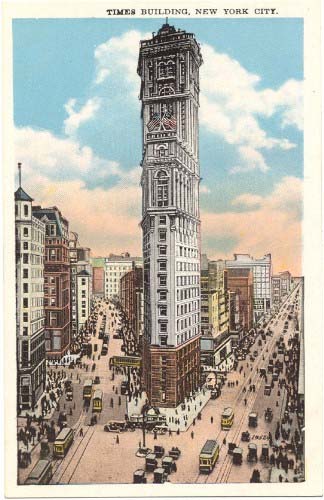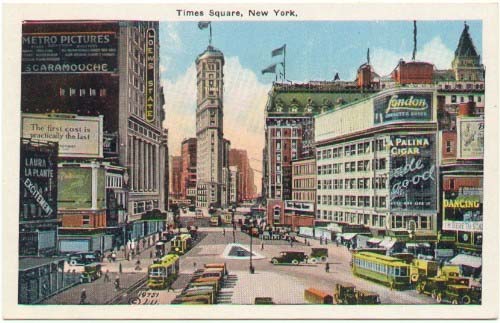"It also created the city's first twentieth-century social and cultural center. The opening of the IRT stop at 42nd Street between Broadway and Seventh Avenue coincided with the New York Times's breaking ground on construction of its highly anticipated skyscraper headquarters. The two events combined to reconfigure Manhattan's midtown boulevard into a crossroads of recreation and commerce the likes of which had never before been seen in America." 1
|
| image from New York Architecture |
Times Square is an area in which a major transition occurred as a result of the subway station as well as the new Times Building. The transformation was sparked by the rapid change already occurring within Manhattan's neighborhoods. It was not until 1904 when the New York Times moved their headquarters to 42nd Street when the transition began. Aldolf S. Ochs, publisher of the New York Times, convinced the mayor to put a subway stop there naming it Times Square after the New York Times (at the time being a local stop in the subway system). In the years to follow, more theaters, music halls and other businesses as well as electric billboards moved into the area turning Times Square into cultural hub.
 |
| image from New York Architecture |
1. A quote from "Down 42nd Street: Sex, Money, Culture, and Politics
at the Crossroads of the World"
by Marc Eliot


What was going on in this area before and up to the new subway station in 1904? Did the new subway really cause transition in the neighborhood? Was it different before or did the addition of mass transit accelerate changes that were already beginning in the neighborhood?
ReplyDeleteBe careful and precise with your claims.